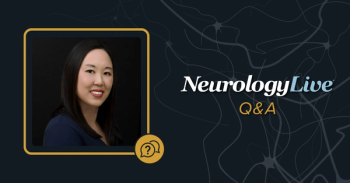
NeuroVoices: Joseph Sirven, MD, on Expanding Research on Social Determinants of Health in Epilepsy
The professor of neurology at Mayo Clinic discussed the need for understanding more about how social determinants of health can impact epilepsy treatment delays.
At the
Additionally, they found that factors such as care setting, age, marital status, race, homelessness, and employment all played significant roles that correlated with treatment delays. They wrote that these results underscore the need for a deeper understanding of the complex interplay of social determinants of health factors on epilepsy care, which to this point has been relatively under researched.
As part of our NeuroVoices series, Sirven, a professor of neurology at
NeurologyLive: What prompted you to conduct this study? What were your most significant takeaways?
Joseph Sirven, MD: What prompted me was a simple, casual observation from patients and friends which started out with a very different question. As I work in an epilepsy center, my work is all about, ‘how do you get patients to come for at least an evaluation or to be looked at for epilepsy surgery?’ Although we’re busy, there always seems to be this underserved area. One of the things that led to that was that there aren’t epilepsy surgery patients out there, it’s just that in order to be classified as an epilepsy surgery candidate, you need to fail 2 medications.
We always found that when we find patients that are interested in pursuing it, they haven’t gone down the first couple of paths. In other words, the most obvious thing in the world is, ‘are you drug resistant? Have you been tried on medications? That led to me asking, are these people even treated? We assume they are, but have they actually been treated. That’s how we got to social determinants. We thought, maybe the answer arises more from the fact that people just don’t get into the system or don’t touch the system in a way that leads you down a journey that would take you to an ultimate cure or resection.
That’s a long way of saying we’re trying to get to the very front of the line to understand what happens at the end of the line. I work in 2 places, first in Mayo Clinic in the clinical world, but I’ve also worked as faculty in the College of Health Solutions at Arizona State University. One of the things they have that others don’t is access to the Arizona Medicaid claims database. This is not public. Medicare and national databases are publicly reported, and anyone can get to them if you know where to look. State claims are not necessarily reported. The Arizona state insurance claims for Medicaid access is house in a section within Arizona State University.
We thought well since they have a good catchment of the safety net, maybe that’s a good place to see how people touch the system who are in the worst of worst positions. The situations where you have no money to the point that you have to be placed on Medicaid. What does that look like? In terms of the first step, just getting treated after you get the diagnosis in a database that has never been examined for that.
We looked to see 3 things. The first is that we hope to do what they do for stroke in the CDC, which has a beautiful national map. If you click on the zip code, city, or county, it will blow up death rates, racial disparities, and much more. We’re trying to do that for the state of Arizona and for this population because we know that they have to be caught. What we found when we tried to do that is that there is no stroke belt, no epilepsy belt, no seizure belt. It didn’t matter where you live, if you’re on Medicaid, you were piled into this pool, regardless of geography. We thought at first that it was going to look at geographic social determinants of health but found out that these issues are everywhere. The second thing was, what’s the treatment delay? How do individual social determinants of health impact your likelihood of getting treated? Once you’ve had that diagnosis of epilepsy.
There’s a couple of interesting things about Arizona Medicaid. They use zip codes. Zip codes are mandated to be used on all Medicaid patients by that insurance. Zip codes are all social determinant codes. I thought about how interesting it would be to analyze this and understand more about the treatment gap after initial diagnosis and how do these individual determinants impact that particular treatment delay.
We thought that at least if we start here in Arizona, we could expand it. The natural thing is to then look at the commercial payers and get the government estate spectrum. What’s interesting is that Arizona is considered one of the better Medicaid programs. Without getting political, it is a purple state currently. Despite the fact that it was a very red state before, they actually expanded Medicaid instead of rolling back ObamaCare. My point is that this gives a glimpse at what the best form of Medicaid looks like. It at least begins to draw a picture of how about getting to step 1, because step 1 doesn’t get talked enough about. It’s not considered sexy.
Why do you think that there are these gaps between the effects of getting diagnosed in an inpatient/emergency care setting versus the nontraditional setting?
That was 1 of the interesting things. It tells you that when you’re in an emergency setting, that’s your best shot of getting treated, mainly because you were assisted by a medical service. Once you touch the emergency room, all the typical guidelines and criteria will follow. That includes when the seizure happens, second seizure, start medication, make sure you get this done elsewhere and a referral will get put in. As a result, that will move nicely. On the other hand, you go the route of the typical clinic, setting is that you’re not in an emergency. There’s not as much impetus or need. You’re sort of lulled into ‘well they’ll see someone’ or ‘they’ll get there.’
The old stigma is that this is an okay thing to wait on will play out and the person will not get treated. That’s what we ended up finding. The more you don’t touch the medical system and go the traditional route, you don’t typically get managed the way you should. That doesn’t mean that those aren’t wrong places, it’s just that for whatever reason, it doesn’t have all the world around you to make it happen. While in an emergency room, it’s a physician, nurse, social worker, and a number of other consultants. That’s quite different from a situation where you’re in a free clinic and someone wants you to do well but doesn’t have that whole team around you.
Transcript was edited for clarity. For more coverage of AAN 2021,
REFERENCE
Sirven J, Sprout G, Speer M, Simic G, Reddy S. The role of social determinants in epilepsy treatment delays for Arizonans on Medicaid. Presented at American Academy of Neurology Annual Meeting; April 17-22. Abstract P11.008
Newsletter
Keep your finger on the pulse of neurology—subscribe to NeurologyLive for expert interviews, new data, and breakthrough treatment updates.



























